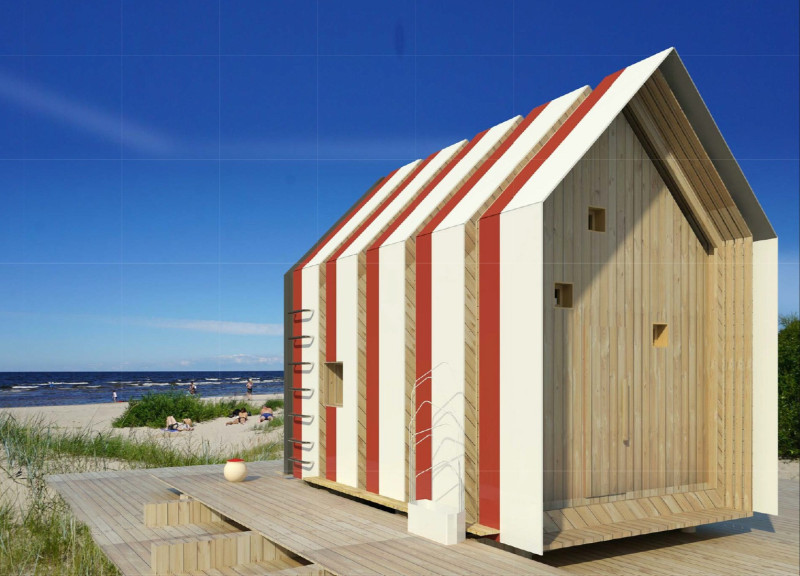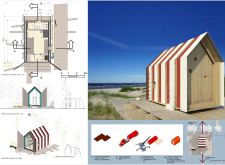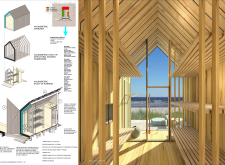5 key facts about this project
The architectural design utilizes a modular approach, allowing for efficient construction and adaptation to the coastal setting. This feature enhances its functionality, as the structure is designed to accommodate various uses, from family gatherings to quiet moments of solitude by the sea. The layout showcases a communal living area that opens up to panoramic views of the beach, fostering a direct connection with the outdoor environment. This openness is further enhanced by the use of large glass surfaces that invite natural light while blurring the boundaries between interior and exterior spaces.
A key aspect of the design is its emphasis on materiality. The cabin primarily utilizes local timber, not only for its sustainability but also for its aesthetic warmth. Wooden cladding complements the natural surroundings, creating a harmonious relationship with the environment. In addition, the integration of glass elements enables occupants to enjoy sweeping vistas and a sense of openness, which is essential for a beachside retreat. The use of composite materials for the roof, featuring a vibrant stripe design, draws inspiration from the Latvian flag and adds a distinct character to the cabin while ensuring durability against the coastal climate.
The design emphasizes user comfort, incorporating flexible interior arrangements that allow for adaptability in the use of space. This flexibility is particularly notable in the multi-purpose modules that can easily be reconfigured or transformed to meet the needs of various activities. The cabin's functionality is further enhanced by the presence of discreet yet essential facilities, such as bathrooms that maintain privacy without compromising on style or usability.
Integrating the project into its geographical location is another significant consideration. The layout encourages interaction with the landscape, featuring pathways that connect the cabin to the beach and surrounding natural areas. This facilitation of movement not only enhances accessibility but also promotes an engaging experience with the coastal ecosystem.
What sets this architectural project apart is its commitment to sustainability and its reflection of cultural identity through design choices. The thoughtful use of locally sourced materials and modular construction techniques minimizes ecological impact while maintaining a strong connection to the region's heritage. This project stands as an example of how contemporary architecture can resonate with its environment, balancing modern functionality with respect for local culture and nature.
For those interested in exploring the nuances of this architectural project further, it is encouraged to delve into the architectural plans, sections, and designs that present a comprehensive understanding of the design’s intricate details and innovative ideas. By examining these elements, readers can gain deeper insights into how the project successfully integrates with its setting while offering a versatile space for relaxation and recreation.


























